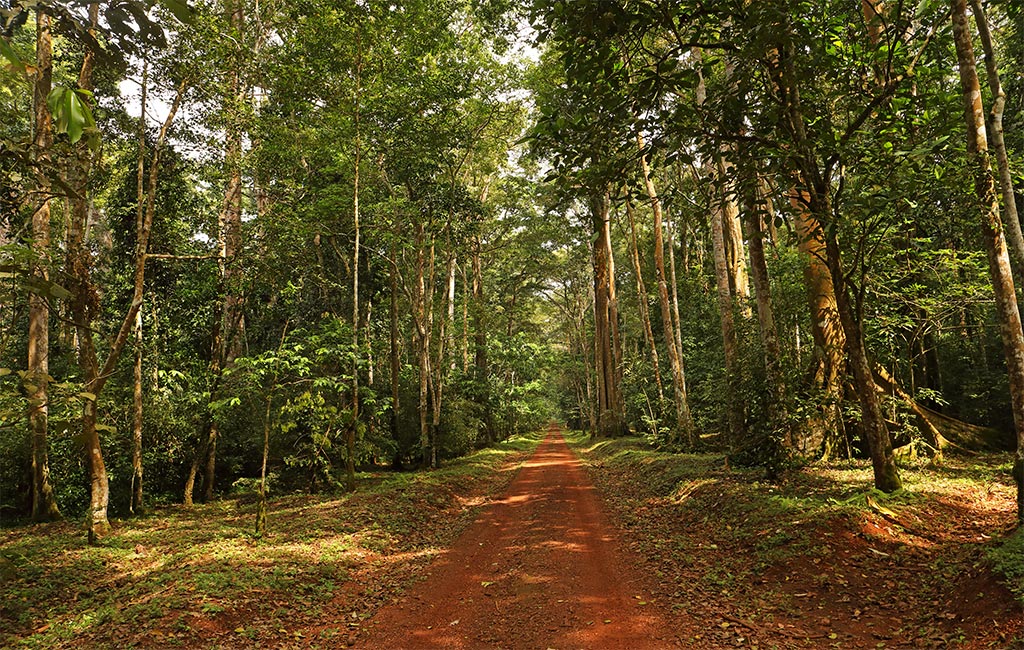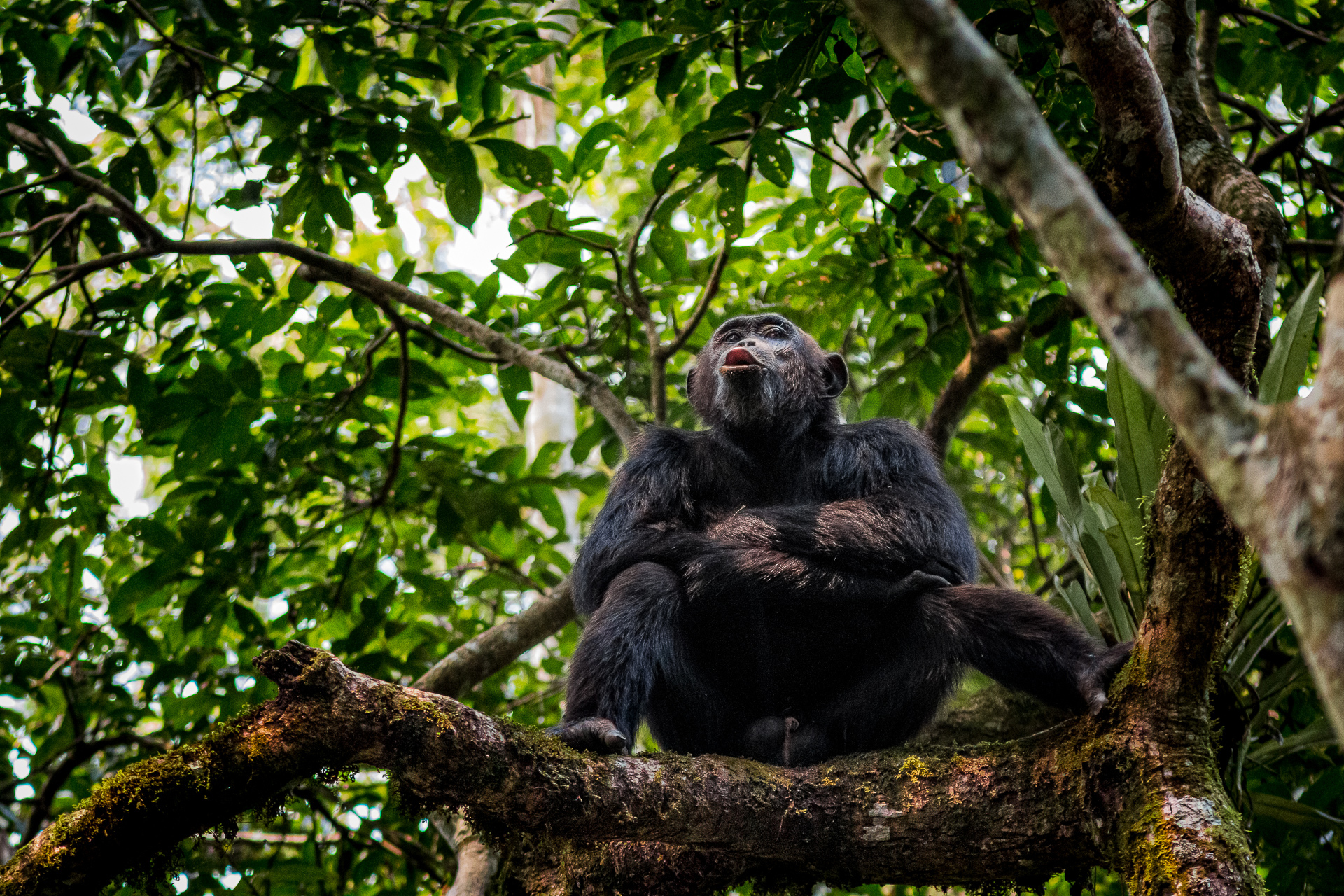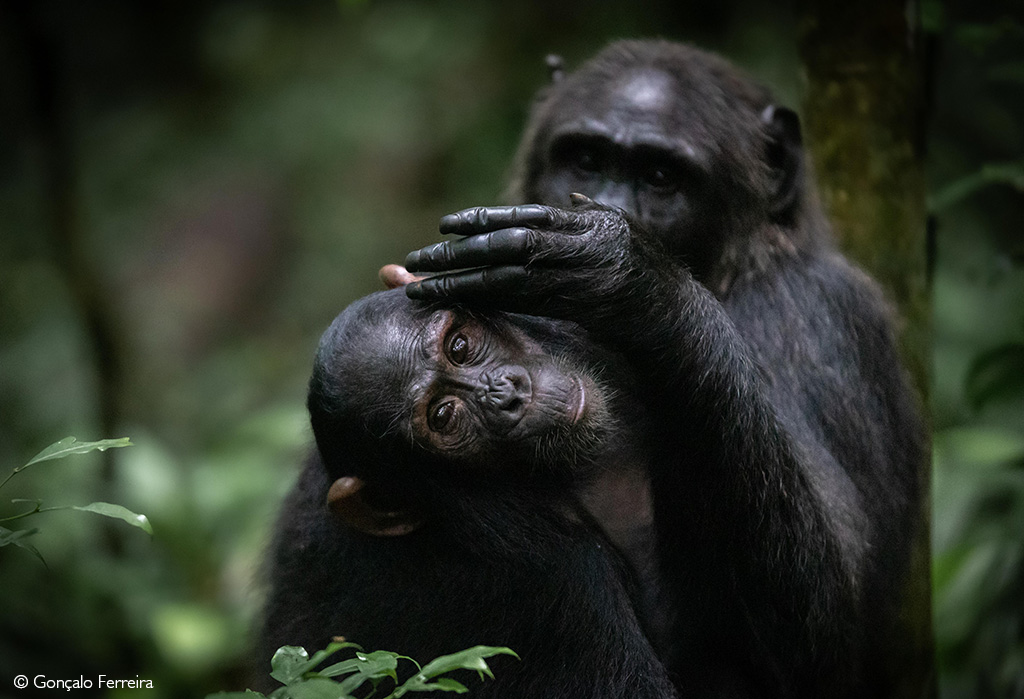
Africa’s primate capital


As we grow up, our innocent appreciation of life’s small pleasures seems to vanish, tempered by life’s many stresses and pressures. In many ways, going on a safari is a way of recapturing this childlike wonder – escapism at its purest. And where better to escape than the green-swathed forest paths of Uganda’s Kibale National Park? A place where the flash of a butterfly’s wing or the soft call of an elusive bird is enthralling and a chimpanzee trekking experience humbling. The joy inspired by the forests of Kibale is undiluted and uncomplicated, a simple celebration of nature’s remaining wonders.

Kibale National Park and its surrounds
The resplendent forests of Kibale National Park stretch out over 776km2 (77,600ha), a dense layer of emerald protecting a diverse array of fauna and flora. The park is contiguous with the northern edge of Queen Elizabeth National Park, the perfect primate-themed complement to Uganda’s most popular Big-5 safari experience. Kibale is the country’s premier chimpanzee trekking destination, supporting a population of well over 1,000 of these complex, intelligent beings.

Most of the park is dominated by evergreen rainforest, with a floral composition that marks a transition from typical high-altitude Afromontane to lowland forest. Among 300 tree species, rare hardwoods like the tiama (Entandrophragma angolense) and brown mahoganies (Lovoa swynnertonii) tower above the forest floor from massive buttresses. Interspersed between them, fruit-laden figs (Ficus spp.) keep the park’s impressive primate densities well-sated.
Beneath the thick canopy, the winding paths are widely acknowledged as some of the most picturesque on the continent, lined with a thick layer of shrubby undergrowth. When the sun shines through the leaves, the effect is an ethereal combination of shades of green and gold, and the air is redolent with the fragrant aroma of petrichor and mulch. The vast tracts of forest are interspersed with patches of grassland and swamp. On the park’s fringes, the community-run Bigodi Wetland is a popular attraction for primate enthusiasts and birders.


The chimpanzees
Kibale’s exuberant chimpanzees are the park’s most popular attraction unequivocally, and a history of nearly three decades of trekking has conferred an almost infallible success rate for encounters. These apes have the honour (perhaps a dubious one, depending upon your perspective) of being our closest relatives and time spent in their company is a unique experience. As the subjects of decades of scientific research, the chimpanzees of Kibale have revealed much about the intricacies of their intelligence, elaborate social nuances and hunting behaviours.
There are two distinct chimpanzee experiences on offer in Kibale National Park. The first is the traditional trek, where expert rangers guide visitors through the forest to find the habituated chimpanzees (often by following their blood-curdling shrieks). This can take up to a few hours, but once the chimpanzees are located, time spent with them is strictly limited to an hour. These animals are entirely comfortable with the presence of their bipedal cousins and will feed, gambol and romance without concern.
Alternatively, a second option is the chimpanzee habituation experience. This is a half- or full-day activity that starts at the break of dawn, led by the researchers of the park’s habituation team. The intention is to gradually introduce unhabituated chimpanzees to the presence of people, a painstaking process that may take several years to accomplish. It is slightly more expensive and requires considerably more patience than conventional trekking, often venturing further into the depths of the forests. However, the reward is an unparalleled insight into the world of chimpanzees without time constraints.

A forest brimming with life
Apart from its ape residents, Kibale National Park is renowned for some of the highest primate densities in Africa. Red-tailed monkeys are ubiquitous, and their white-patched cheeks and noses are undeniably adorable. The park’s monkey checklist includes the endangered Ugandan red colobus monkey, the threatened Uganda mangabey, the fierce-looking common patas monkey, the mantled guereza (Abyssinian black-and-white colobus), the vervet monkey, and the blue monkey. A special night walk may also reveal the shy and elusive East African potto and several galago (bushbaby) species.

Though the primates are undoubtedly the more conspicuous (and noisy) inhabitants, the diversity of Kibale extends to myriad mammal, bird, reptile, arthropod and amphibian families. On the larger side of the animal spectrum, elephants and buffalos regularly wander into the forest from neighbouring Queen Elizabeth National Park.
These are seldom seen and religiously avoided by the guides leading walks through the forest. Red and blue duikers, bushpigs, and giant forest hogs all occupy the undergrowth in the company of servals and rare African golden cats. There are even two species of otters in the forest waterways and swamps: the Congo clawless otter and the spotted-necked otter.


A flash of feathers
Uganda ranks high on the list of essential birding destinations in Africa. No tour of the country would be complete without dedicating some time to scanning the thickets and canopies of Kibale National Park. With habitats ranging from wet to dry forest, woodland, savanna and swamp, the park’s total bird list numbers 375 species, including six Albertine Rift endemics. For avid birders, the inventory of avian occupants reads like a riveting novel: olive long-tailed cuckoo, western tinkerbird, African pitta, black-bellied seedcracker, African grey parrot, black bee-eater, red-chested owlet, black-eared ground-thrush and the innately comic great blue turaco – could it get better than this?
The answer is yes because there is one particular feathered occupant that, upon its discovery in the park in 2005, saw birding interest in Kibale skyrocket – the green-breasted pitta. These enigmatic little birds are only found deep in the tropical forests of Central Africa and, despite their spectacular kaleidoscope of colours, are surprisingly elusive. Few birders have had the good fortune of laying eyes on the green-breasted pitta. The tale of how a lost guide (intent on keeping her geographical confusion secret from her chimpanzee tour group) stumbled upon the first sighting is genuinely charming. Fortunately, ranger Harriet Kemigisha had the good sense to recognise the pitta as an extraordinary finding. Years later, she would lead Africa Geographic director Christian Boix on a pilgrimage to view one. The story (well worth reading in full) can be accessed here: Searching for the elusive green-breasted pitta. Even better, you could be heading out on your own trip to spot a green-breasted pitta (and much more) on this 5-day safari.

Explore & stay
Want to go on a safari to Kibale? To find lodges in or near Kibale, search for our ready-made packages and get in touch with our travel team, scroll down to after this story.
With this abundance of birds and mammals, along with a profusion of 250 butterfly species and around 70 reptiles and amphibians, Kibale National Park is Eden-like in its beauty. Every step through the park offers a discovery. Kibale is, however, a tropical rainforest, so every step should be taken in a comfortable pair of solid boots and long trousers, lest the mud, biting ants or stinging nettles detract from the adventure. All electronics and other precious belongings should also be thoroughly waterproofed. Rain is possible at any time of year, though April, May and November tend to experience higher rainfall levels. The trails are well-maintained and suitable for most fitness levels, though those trekking chimpanzees should be prepared to walk for several hours if necessary.
There is only one lodge inside the national park itself, but there are countless lodges, guest houses and tented camps on the periphery. This Uganda region is full of exciting attractions, from Lake Edward and Lake George (two of the smaller Rift Valley Lakes) to ancient explosion craters filled with saltwater lakes. Naturally, a game drive or two in neighbouring Queen Elizabeth National Park is a must, as is a tour of the Crater Lakes (and even a swim if you are feeling brave) and a cultural tour of surrounding villages.

To comment on this story: Login (or sign up) to our app here - it's a troll-free safe place 🙂.![]()




